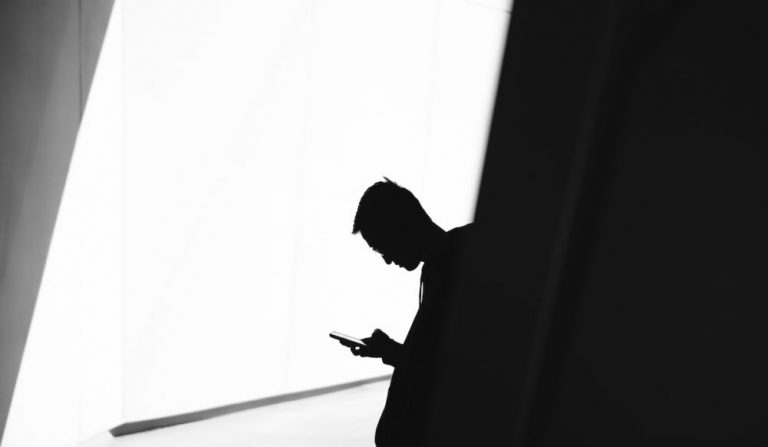About two years ago, I lost my phone. Waiting at Newark International Airport, I heard the cancellation of my Chicago flight, closed down by a blizzard. I took out my phone to call home, but then I learned about another plane, soon departing from a different terminal. Stampeding down the concourse with the crowd, I must have dropped my aging Samsung.
In the weeks that followed, I added “Buy a phone” to my list of undone tasks, but as each list replaced the former one, something held me back. Gradually, I understood: losing the phone felt liberating.
Living as I do in central New Jersey, I wouldn’t have the same sense of relief if my Toyota disappeared. And I’d surely miss my Kenmore washing machine, still running after 20 years. But cell phones differ from technologies like these—and in ways we might not appreciate.
Pinging, ringing, and vibrating all the time, phones can be annoying, but that’s not what sets them apart. Lying in my bed at the end of a day, I don’t feel so overwhelmed by anxiety that I can’t relax unless I run downstairs to do another load of dirty clothes. But anxiety, guilt, loss, loneliness—these emotions can arise when I’m unconnected to my phone, and I’m not the only one this happens to. The mystery is why.
Most of our machines have been designed to replicate or enhance our bodies’ functioning. A hammer is a prosthetic hand; bicycles are prosthetic legs. But cell phones, iPads, and PCs are prostheses for our minds.
Related: AI, Karma & Our Robot Future
People often talk about the mind as though it’s a computer when the relationship is just the reverse: computers imitate our mental processing. Our grandparents didn’t need Steve Jobs to watch the screens behind their eyes. They’d admire mental snapshots of their patios or replay movies in their heads, adding sound to the images.
Computers and their spinoffs are machines designed to simulate these capacities, and like all tools, they soon become extensions of ourselves. The mind is no computer, but our consciousness still merges with our phones and tablets as seamlessly as a painter’s hand fuses with her brush or musicians vocalize through their instruments. This fusion can happen, Buddhist teaching holds, because consciousness is formless and adopts the qualities of everything it “touches.” Once we’ve immersed ourselves in our screens, they become our whole reality—and that’s why texting drivers look up with surprise when they rear-end the car in front of them.
We’d like to believe there’s a clear boundary between the real and the virtual, but if screens have become extensions of our minds, that assumption could prove fatally naïve, especially now that IT visionaries claim an implant linking our brains to the Web is less than a decade away.
Related: Can Virtual Reality Help You Reach Enlightenment?
Long before the Internet, early Buddhists coined a term—prapanca in Sanskrit—to describe the tendency of our thoughts to proliferate like “entangling vines,” as Zen teachers say. Mahayana Buddhists expanded the term to include not only words and ideas but also images, memories, and other mental fabrications. Now, the time has come for us to add everything streaming into our heads from our new prostheses: YouTube videos, online news, music, selfies sent from far away.
The trouble with prapanca, the Buddha taught in the Madhupindika Sutta, is that the nonstop novelty prevents us from uncovering the sources of our suffering. We shuttle from one screen to the next, trying to allay our nagging sense that something’s missing or not right. But nothing we find satisfies for long, and so we start Googling again.
Instead, we need to turn our devices off. When the screens in front of us go blank, we have a better chance to become aware of another screen “behind our eyes,” the screen of the mind. Then, if we sit quietly, watching the breath or reciting the Buddha’s name, that inner screen will empty out until it appears formless and radiant. And once we make contact with this bright, empty mind, our craving for fresh screens comes to a stop. No matter what displays we encounter when we switch our devices on again, all of them will convey the same “one taste.”
The Samdhinirmocana Sutra describes this “one taste” as a timeless “now” that is “unproduced, unceasing, quiescent from the start, and naturally in a state of nirvana” (trans. John Powers). In that state, where you have nothing to achieve and nowhere left to go, it won’t hurt to make an occasional call or look up a restaurant on an app because the mind behind your eyes hasn’t changed.
Still, I’m not planning to buy a new phone. Phones come in handy if your car breaks down or you get lost in Brooklyn. But when I’ve found myself in those predicaments, I’ve had to reacquaint myself with two often overlooked dharma practices. The first is giving a person on the street the chance to offer me assistance. The other practice goes to the very heart of our real, not virtual, connectedness. That practice is asking for help.
[This story was originally published in 2017]
Thank you for subscribing to Tricycle! As a nonprofit, we depend on readers like you to keep Buddhist teachings and practices widely available.
